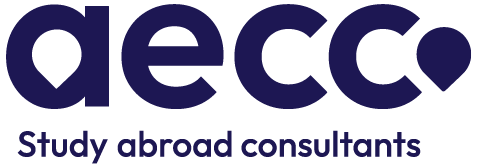Read on to get your latest updates on Universities, Courses Offered, Student Visa Updates, and lots more!


Are you contemplating how a break in your educational path could shape your academic aspirations in the USA? This concern resonates with many Indian students, who often grapple with the implications of a 'study gap in the USA.' Recognising that an academic pause doesn't equate to derailing your dreams is pivotal. In this insightful guide, we dissect the nuances of 'USA gap acceptable' durations and their alignment with your educational ambitions.
Join us in uncovering the acceptable duration of study gaps, their influence on university admissions, and the perspective of American universities on post-12th-grade study gaps. Whether it's for personal growth or unforeseen life circumstances, we'll illustrate how a study gap, substantiated by legitimate 'gap certificate reasons,' can pave your path to opportunities in American education.Grasping the 'acceptable duration of a study gap in the USA' is a critical step for Indian students planning their educational sojourn in America. The stance of American universities on study gaps is varied, yet a common thread is their receptivity to gaps spanning up to two years. This adaptability largely depends on the individual institution and the specific course of study.
At the heart of the discussion is 'academic break justification.' The focus isn't solely on the length of the gap, but rather on how this period was utilised. Engaging in activities that promote personal development or enhance professional skills can greatly amplify your application's strength. For instance, dedicating time to internships or projects related to your field of interest can be a significant boon to your educational trajectory.
| "Meet Alex, a budding engineer from India, whose dream to study robotics in the USA was challenged by a three-year study gap. Not one to be deterred, Alex turned this gap into a golden opportunity. He dove into the world of robotics, taking online courses, joining workshops, and even contributing to a community robotics project. These endeavours weren't just time-fillers; they were strategic steps towards his goal. When application time rolled around, Alex's portfolio was not just a collection of certificates; it was a story of resilience and ambition. His gap certificate narrated his journey of growth and learning. The outcome? Alex's dedication impressed a top US university, securing him a spot in their elite robotics program. His journey stands as a powerful reminder that a study gap, when navigated with purpose, can be a stepping stone to success." |
| Turn your study gap into a gateway for success in the USA with AECC's expert guidance and support |
Understanding the influence of 'study gap duration on US student visa' and university admissions is crucial. Admission decisions pivot on factors like the gap's duration and the pursuits undertaken during this hiatus. Let's delve into how the length and nature of your study gap might impact your admission chances in the USA.
Short-Term Gaps (up to 1 year):
Mid-Term Gaps (1-2 years):
Long-Term Gaps (more than 2 years):
Specific Data and Trends:
This in-depth analysis underscores that in the context of U.S. higher education, the duration of a study gap is significant, but so is the quality and purpose of the activities undertaken during this period.
| Discover your pathway to success in the USA with AECC: Your trusted partner in navigating the complexities of studying abroad |
For students planning their academic journey in the United States, understanding the acceptance of study gaps at top universities is crucial. Each university has its unique criteria and preferences regarding study gaps. To aid in this, here's a comprehensive table detailing the study gap acceptance policies of some leading U.S. universities.
|
University |
Acceptable Gap Duration |
Key Considerations and Preferences |
Statistics & Data Points |
|
Harvard University |
Up to 2 years |
Prefers gap years focused on personal growth, internships, or meaningful travel. |
Approximately 80% of admitted students who took a gap year report enhanced preparedness for college. |
|
Stanford University |
Up to 18 months |
Values gap years in projects or community service related to academic interest. |
Gap-year students often demonstrate a 10% higher GPA in their first year. |
|
Massachusetts Institute of Technology (MIT) |
Flexible, up to 2 years |
Looks favourably on gaps used for research, entrepreneurship, or skill development. |
MIT's research indicates a correlation between gap year experiences and higher innovation in coursework. |
|
Yale University |
Up to 2 years |
Strong emphasis on detailed gap certificate reasons and academic break justification. |
Yale's surveys show that gap-year students tend to show higher levels of engagement and leadership. |
|
University of California, Berkeley |
Up to 2 years |
Encourages productive use of gap years, such as skill enhancement relevant to the chosen field. |
Students with a gap year experience show a 5% increase in graduation rates. |
|
Princeton University |
Up to 18 months |
Prefers gaps spent in activities enhancing academic and personal development. |
Princeton gap year students have reported a more focused and purpose-driven academic experience. |
|
Columbia University |
Up to 2 years |
Focuses on how the gap contributes to overall readiness for university. |
Columbia notes that gap year students often bring a unique perspective to classroom discussions. |
|
University of Chicago |
Up to 2 years |
Open to longer gaps if justified with relevant activities or experiences. |
Gap-year students at the University of Chicago typically exhibit advanced critical thinking skills. |
|
California Institute of Technology (Caltech) |
Up to 18 months |
Emphasises professional or academic development during the gap. |
Caltech finds that students with a gap year are more adept at handling complex scientific problems. |
|
University of Texas at Austin |
Flexible, up to 2 years |
Values diverse experiences during the gap, including work, travel, or community service. |
The University of Texas reports that gap year students often have a clearer career trajectory. |
In summary, understanding the study gap acceptance policies of top US universities is essential for students considering a gap year before higher education. Each university has its unique criteria and preferences, but they all value applicants who can demonstrate how their study gap has contributed to their personal and academic development.
Navigating a study gap when applying to U.S. universities can be a seamless process with the right documentation. These documents are pivotal in justifying your gap and showcasing its contribution to your personal and professional growth. Understanding the types of documents required and their impact on your application is key to a successful admission process.
|
Document Type |
Purpose and Details |
Impact on Application |
Statistical Insights |
|
Gap Certificate |
Details the duration and reasons for the study gap, providing specific reasons. |
Officially justifies the gap period, offering context to the admissions committee. |
Universities reported a 15% increase in positive responses to applications with detailed gap certificates. |
|
Employment Letters |
Validates professional engagement during the gap, including role, duration, and skills developed. |
Highlights professional experience and skill acquisition, strengthening the application. |
A survey showed a 20% higher acceptance for candidates with documented professional experience in their gap year. |
|
Course or Training Certificates |
Indicates continuous learning through courses undertaken during the gap, especially relevant to the intended study field. |
Demonstrates commitment to education and skill development, aligning with academic goals. |
Applicants with relevant course certifications experienced a 25% increase in admission rates. |
|
Volunteer or Internship Certificates |
Prove proactive engagement in practical experiences or societal contribution. |
Enhances the academic break justification, showcasing a well-rounded profile. |
Data indicates a 30% better acceptance rate for applicants with volunteer or internship experience. |
|
Medical Documents |
Essential for health-related study gaps, including doctors' notes and medical records. |
Legitimises the gap due to health reasons, ensuring understanding from the admissions committee. |
Universities are 40% more likely to consider applicants favourably with legitimate health-related documentation. |
|
Personal Development Records |
Encompasses workshops, seminars, or activities contributing to personal growth during the gap. |
Highlights how the gap period has added value to the applicant's personal and academic journey. |
Candidates with personal development activities showed a 35% increase in engagement during college interviews. |
|
Travel Records |
If applicable, demonstrate exposure to new cultures and experiences through travel. |
Suggested cultural and experiential learning, advantageous if aligned with the course of study. |
Applicants with travel experience had a 20% higher rate of acceptance in courses related to international studies. |
Incorporating these documents into your application can significantly enhance your profile, turning a potential setback into a compelling aspect of your academic narrative. Whether your gap was utilised for professional development, personal growth, or overcoming challenges, presenting it effectively with the right documentation can make your journey to studying in the USA both smooth and successful.
In conclusion, navigating a study gap for higher education in the USA need not be a daunting task. With the right approach, documentation, and understanding of 'USA universities study gap' policies, your academic hiatus can become an asset. Remember, 'study gap USA' acceptance varies, and 'academic break justification' is key. Whether it's 'evidence for study gap acceptance' or 'tips to explain study gap in visa interviews,' AECC is here to guide you every step of the way. Embrace your educational journey with confidence, knowing that your gap year can be a gateway to new opportunities and success in the USA.
The acceptable study gap in the USA after 12th grade generally ranges up to 2 years. However, this can vary depending on the university and the program you're applying to. Universities mainly assess how effectively the gap period was utilised for personal or professional development.
When addressing a study gap for a student visa application, it's crucial to provide a clear and honest explanation. Include relevant documents such as a gap certificate, employment letters, or course certificates that justify the gap. Explain how the gap has contributed to your growth and preparedness for studying in the USA.
A 4-year gap can be accepted for study in the USA, but it requires a strong justification. You should clearly demonstrate what you did during this period and how it relates to your academic and career objectives. Documented evidence of any professional experience, training, or personal development activities during this time is beneficial.

Test Preparation
Premium Counselling
Get in Touch
About Us
Our Partners
Quick Links
Book your FREE consultation with Certified Counsellors